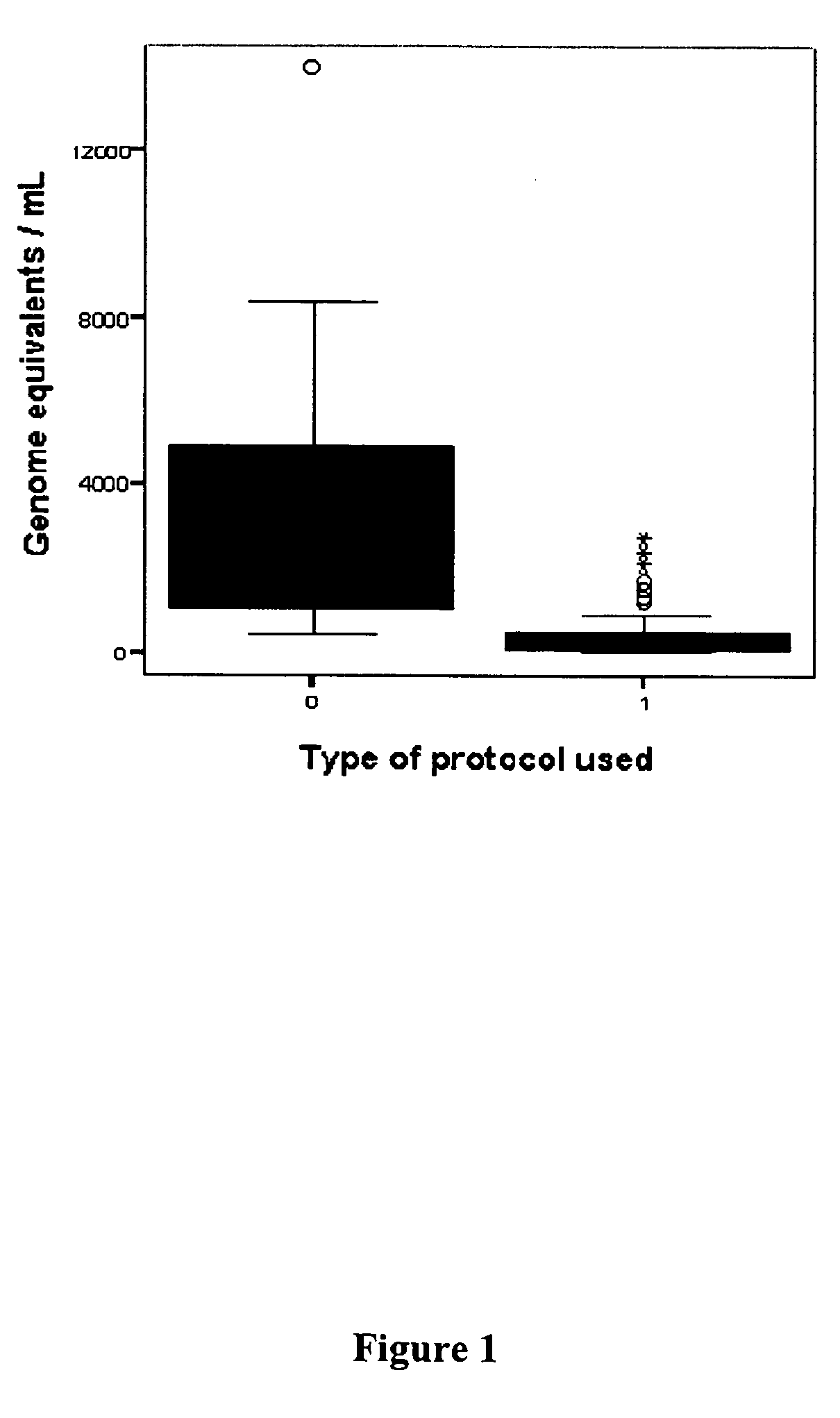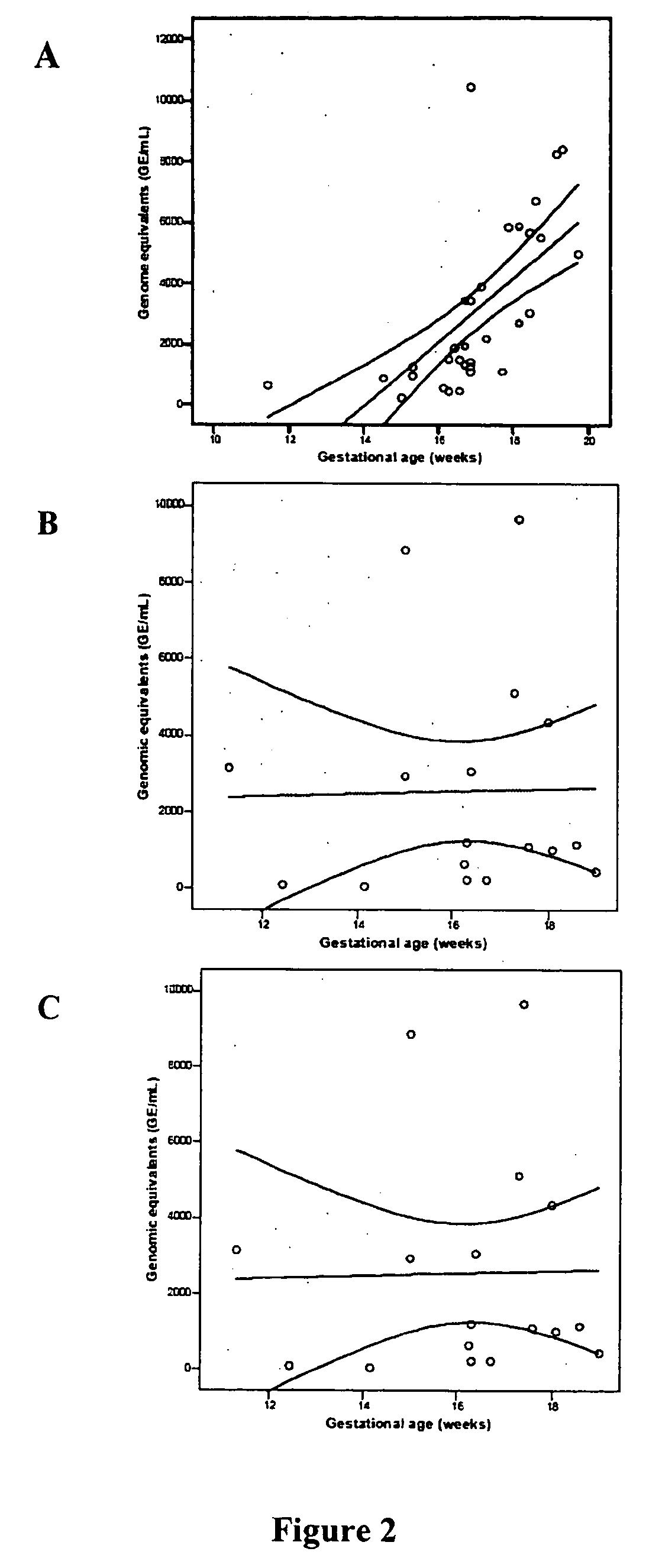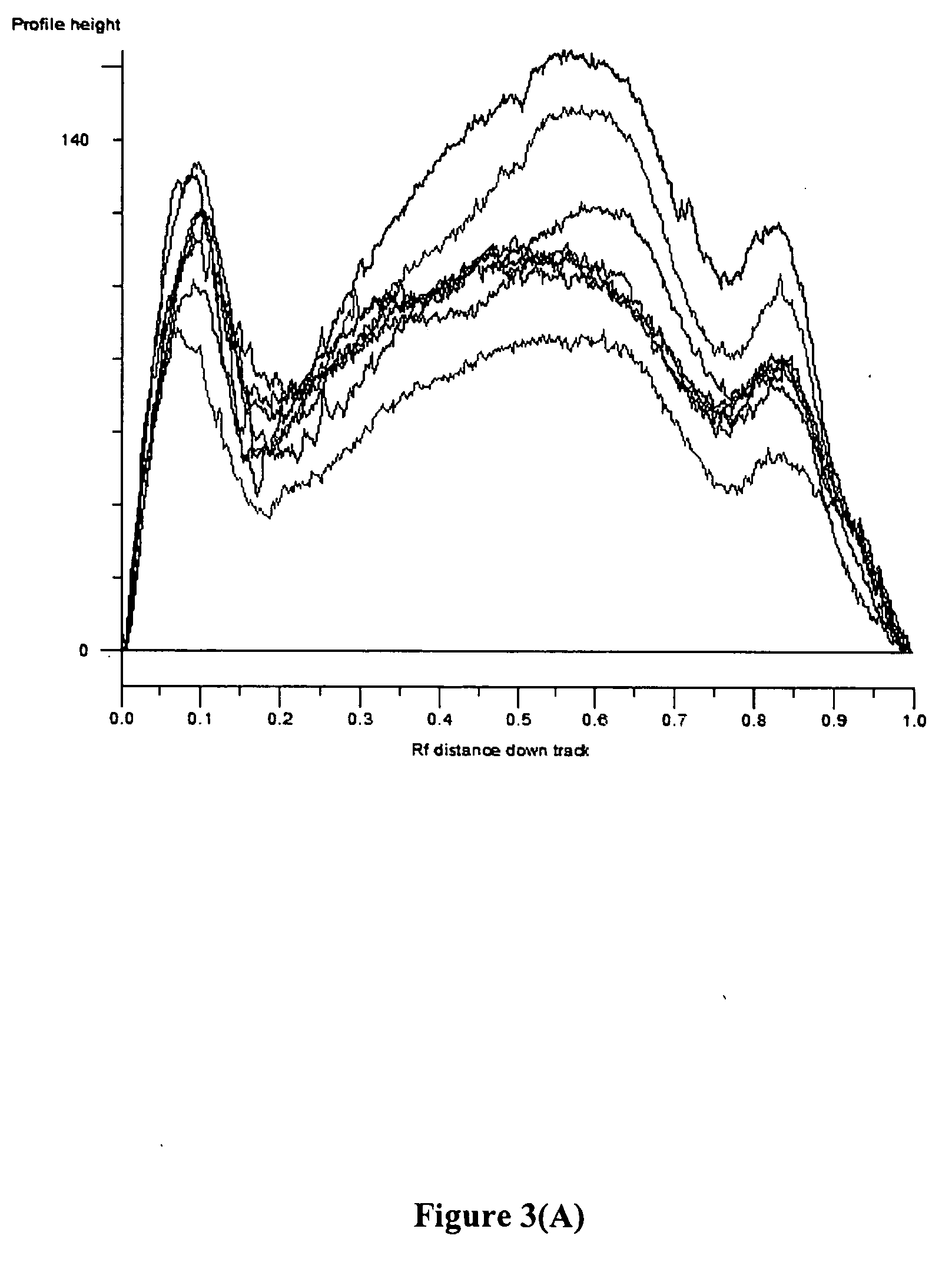Amniotic fluid cell-free fetal DNA fragment size pattern for prenatal diagnosis
- Summary
- Abstract
- Description
- Claims
- Application Information
AI Technical Summary
Benefits of technology
Problems solved by technology
Method used
Image
Examples
example 1
Amniotic Fluid Fetal DNA Isolation and Preliminary Tests
[0128] Frozen amniotic fluid supernatant specimens (38) were obtained from the Tufts-New England Medical Center (Tufts-NEMC) Cytogenetics Laboratory (D. W. Bianchi et al., Clin. Chem. 2001, 47: 1867-1869). All samples were collected for routine indications, such as advanced maternal age, abnormal maternal serum screening results, or detection of a fetal sonographic abnormality. The standard protocol in the Cytogenetics Laboratory is to centrifuge the amniotic fluid sample upon receipt, place the cell pellet into tissue culture, assay an aliquot of the fluid for alpha-fetoprotein and acetyl cholinesterase levels, and store the remainder at −20° C. as a back-up in case of assay failure. After six months, the frozen amniotic fluid supernatant samples are normally discarded.
[0129] The frozen fluid samples obtained from the Cytogenetics Laboratory were initially thawed at 37° C. and then mixed with a vortex for 15 seconds. An aliq...
example 2
Improvements in Amniotic Fluid Fetal DNA Isolation Method
[0134] Using the “Blood and Body Fluid” vacuum protocol, only a minor proportion of amniotic fluid supernatant samples could be further analyzed (e.g., with genomic microarrays, in which a minimum of 100 ng of DNA is necessary) (P. B. Larrabee et al., Am. J. Hum. Genet., 2004, 75: 485-491).
[0135] As reported above, the original method was based on known protocols for the extraction of cell-free fetal DNA from maternal plasma / serum, as specific guidelines for the extraction of DNA from amniotic fluid did not exist. Therefore, further investigation was needed to optimize cell-free fetal DNA extraction from amniotic fluid supernatant to more fully exploit this promising source of genetic material.
[0136] Approval for this study was obtained from the institutional review Board of Tufts-New England Medical Center (Boston, Mass.) and Women and Infants Hospital (Providence, R.I.). For protocol optimization, five large volume sample...
example 3
Investigation of Amniotic Fluid Fetal DNA Fragmentation Pattern
[0145] To date, no study has addressed the biochemical properties of cell-free fetal DNA in amniotic fluid. This is in contrast to maternal plasma, in which it has been shown that circulating fetal DNA sequences are smaller than maternal-derived ones, on the order of less than 300 base pairs (Y. Li et al., Clin. Chem., 2004, 50: 1002-1011; K. C. A. Chan et al., Clin. 2004, 50: 88-92). This distinct property has been used to increase the yield of fetal DNA extracted from maternal samples to permit non-invasive prenatal diagnosis of β-thalassemia (Y Li et al., JAMA, 2005, 292: 843-849).
[0146] The Applicants have hypothesized that cell-free fetal DNA in amniotic fluid would have different biophysical properties that cell-free fetal DNA in maternal plasma. Since second trimester amniotic fluid is composed predominantly of fetal urine, the Applicants speculated that passage of cell-free fetal DNA through the fetal kidneys m...
PUM
| Property | Measurement | Unit |
|---|---|---|
| Time | aaaaa | aaaaa |
| Volume | aaaaa | aaaaa |
| Volume | aaaaa | aaaaa |
Abstract
Description
Claims
Application Information
 Login to View More
Login to View More - R&D
- Intellectual Property
- Life Sciences
- Materials
- Tech Scout
- Unparalleled Data Quality
- Higher Quality Content
- 60% Fewer Hallucinations
Browse by: Latest US Patents, China's latest patents, Technical Efficacy Thesaurus, Application Domain, Technology Topic, Popular Technical Reports.
© 2025 PatSnap. All rights reserved.Legal|Privacy policy|Modern Slavery Act Transparency Statement|Sitemap|About US| Contact US: help@patsnap.com



